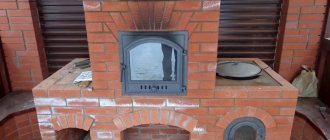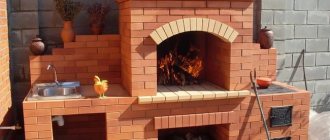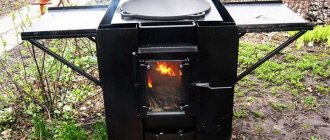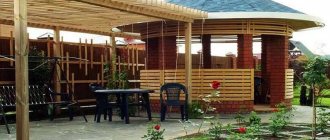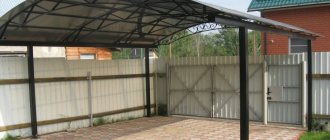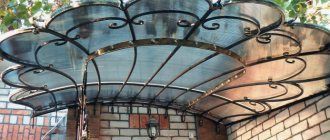What is comfort in the home? This is when it’s warm in winter and cool in summer, walking on a pleasant-to-touch, non-icy floor covering, comfortable furniture and a cozy bed for you and your children. Children fall asleep faster and sleep better when it is warm and comfortable to sleep on soft, children's mattresses https://mebelsait.dp.ua/detskie-matrasy.
When you think about building your own home, you have a desire to make it warm and cozy. Modern gas and electric boilers, converters, etc. cope with heating the house, but they cannot create a cozy atmosphere. That is why stove heating is being actively used again.
The stove is a highlight of the design and an economical heating device. It is much easier to find an experienced stove maker to lay a stove. But this long-forgotten craft has only just begun to gain popularity, and there are very few experienced stove makers.
Therefore, a reasonable question arises: “How to build a brick oven with your own hands?”
Laying out a stove correctly requires a lot of effort, and you will also have to study a lot of instructions for laying brick stoves.
Types of stoves
The first step is to choose a stove that is right for you. The most popular are:
- Dutch;
- Russian;
- Swede.
Types of wood stoves
Having decided on what your heating device will operate on, you should decide what its main parameters will be.
Modern wood stoves are usually divided according to the following indicators:
- Purpose: Heating, their only task is to heat the building;
- Heating and cooking. They heat several rooms at once and have special design elements (hobs) that allow you to cook and heat food;
- Furnaces-boilers. A water circuit is built into them, which allows them to be used in a water heating circuit or for preparing hot water. Varieties of such structures are sauna stoves;
- The oven is universal, equipped with a compartment for drying fruit, a hot water box, an oven, a summer chimney and a samovar connection point.
- Metal, with thin and thick walls;
- classic options, designed for installation near a wall;
- short-term (up to 3 hours) burning of one stack of firewood;
*
Also read about the bell-type stove and how to make it.
Russian stove
Large-sized and multifunctional oven. But its size is justified by the presence of free space where you can relax. There is a firebox under the bed where you can cook food. Next to the firebox there is a stove, and just below there is a vent that keeps the fire going. There is also a niche for freshly prepared food.
A Russian stove can easily heat a room larger than 40 square meters. But a full-fledged robot will require a lot of raw materials.
Stove-fireplace for a summer residence - warmth without extra costs
A stand-alone heating plate, commonly known as a heating stove, does not require a special foundation or casing. Even in an already installed room, a qualified specialist can install such a stove without inconvenient construction work within two hours! A heating stove-fireplace is an excellent additional source of heat for a summer house, which is also environmentally friendly and easy to install. The design takes up less space than a traditional fireplace. You can easily install a potbelly stove in your living room without the need for messy and time-consuming construction work. When you leave your dacha, you can take the stove with you until the next season.
Swede
Refer to compact options. Length and width – 1 meter. The main function is to heat the room, but you can also cook food on it. The unusual thing about such a stove is that the stove is built in the kitchen, and the rest of the stove will be in another part of the house.
This design is fire hazardous. But the risk of fire is reduced with the help of dampers.
Does the fireplace stove have any defects?
In fact, the only downside to a freestanding hot plate is that it can only heat one room. Such a device is not suitable as the only source of heat in the house. The small size of the stove means that you can fit smaller pieces of wood into it - usually around 30cm. There is the inconvenient need to add wood frequently, without the ability to throw in a large piece that will burn all night.
Construction rules
A homemade stove must meet fire safety requirements. Therefore, special attention must be paid to preparation for construction.
- Decide on the location of the oven.
- Prepare the correct drawing.
- Buy quality materials for construction.
- Purchase of tools.
- Create a cost estimate.
Correctly drawn up drawings will become your main assistants, since it is the drawings of a homemade brick oven that help you avoid many mistakes. Ready-made plans can be found on the Internet.
When choosing an installation location, you need to take into account the area of the room and the type of oven. It’s difficult to calculate everything yourself, so it’s easier to use a reduced model of a brick oven, a photo of which is available on the Internet.
Advantages of a long-burning stove-fireplace
The fireplace stove can be installed anywhere in the house, provided that there is a connection to the chimney, which is easy to install without the need for ceiling reinforcement. A potbelly stove takes up less space than a traditional stationary fireplace. This device is cheaper than a classic stone firebox. You can take the stove with you when moving to another place of residence. The fireplace stove has a closed combustion chamber. The device can have a traditional or modern form. The stove supplies heat to the entire surface, including the exhaust pipe. The combustible material can be either firewood or coal briquettes.
Selection of working tools
Compliance with the technology and the quality of the work performed will also directly depend on the auxiliary measuring instruments and tools that must be used during the work on laying the furnace.
When laying a furnace, measuring, construction and many other auxiliary tools are used:
- Jointing - pours the mortar into the seams and gives the joints an aesthetic appearance. It will come in handy if the stove is left without lining or plaster.
- Trowel.
- Hammer-pick.
- Shovel for mortar.
- Plumb.
- Stove line.
Fireplace stoves: wide selection of models
From year to year, fireplace stoves present a richer range of solutions. Neutral bases made of clear, tempered glass allow you to lay wooden parquet under the slab without worrying about damage. Black round mats made of graphite tempered glass, copper or sheet protect the space under and around the stove, thereby covering the floor. The fireplace stove can be easily made to order, choosing any shape and size (circle, semicircle, rectangle, corner model and other options).
If you are thinking about placing a fireplace stove in the living room, bedroom or kitchen, then check out the photo gallery presented, where you will find ideas for interior design with a potbelly stove in different styles.
Materials
The heat transfer and durability of the stove will depend on the material used in construction. Therefore this stage is very important.
For cladding, ceramic bricks are used - grade M-500. It is insensitive to temperature changes. And the combustion chamber needs to be laid out only from refractory bricks.
In addition to bricks, the following is used:
- Sifted sand.
- Clay – normal fat content.
Peculiarities
If we compare a traditional stove and modern fireplaces, their main difference is the time it takes to heat the room and how long it takes to retain heat. As you know, the stove has a brick chimney, and this building material, when heated, releases heat well into the air, retaining heat for a long time. As for the open fire in a traditional fireplace, it immediately heats the air, but the heat only lasts while the fire is burning. As a result, a fireplace with an open firebox is impractical; it can only be used with the installation of special elements that accumulate heat.
A fireplace stove is an effective solution, because the device has a closed structural system with increased heat transfer and a chic appearance. Depending on the type of fuel used, stoves are: wood and gas, electric and liquid fuel. The choice of model depends on the operating conditions, for example, wood-burning models have a high heat transfer coefficient, but you need to constantly have a supply of logs, the consumption of which is high. Gas furnaces provide less heat and require gas communications and special equipment. Electric models are expensive, but convenient, and a modern and interesting option is a liquid fuel (ethanol) stove.
As for the material used to make the structure, it can be brick or stone, cast iron or steel. Stone has good heat transfer properties, but is heavy and requires a reinforced foundation, while cast iron is practically not inferior in heat preservation function, but does not require a special foundation. The steel structure cools quickly, but is lightweight. As for the chimney, it is needed only for stoves operating on solid fuel (wood and gas). For other fireplaces, ventilation and ventilation are sufficient, as they can absorb oxygen from the air.
Foundation for the stove
The basis for a homemade stove is made at the time of construction, since a brick stove requires a strong foundation
First, they dig a hole. It is necessary to take into account that the width and length of the pit must exceed the size of the foundation by 20 cm
Afterwards, the pit is leveled and half filled with sifted sand, compacted well and leveled. Waterproofing is laid on top of the sand, and formwork is installed.
Next, all free space is filled with concrete mortar, bringing it to ground level. Be sure to check the surface for horizontalness using a building level.
After 5-6 days the concrete should harden. After that, the formwork is dismantled, waterproofing is laid and the foundation is brought to the floor. There are two ways to bring the foundation to the floor:
- lay out of brick;
- re-build the formwork, filling it with concrete up to the beginning of the floor. All voids are covered with sand, compacting it.
Concrete mortar recipe - one part of cement contains 2.5 parts of sand and four parts of gravel.
Fireplace stove: inspiration for interiors
The dream of a large fireplace in the interior can often be unrealistic due to the labor-intensive reconstruction of the room. The idea of using a fireplace stove can be found in almost any interior. The ease and speed of installation of such a heating device makes it the most preferred source of heat in homes.
Fireplace stoves are available in an unlimited range of colors, shapes and decorations. The most versatile, combining with both classic and modern interiors, are black designs with a simple cylindrical shape. Potbelly stoves in the more classic version, rectangular and trapezoidal, have stylized legs. They also come in very rich colors: from classic black, brown to bottled green, purple, wine, shades of cream and off-white.
Masonry process
The masonry mixture is prepared from sifted sand and clay. The clay is left in water for a couple of hours, after which it is sifted through a sieve. Currently, there is no need to prepare this mixture yourself. A number of companies offer ready-made masonry mixtures in various packaging. Using such masonry mixtures is preferable to making them yourself.
Industrial sieves sift a finer fraction of sand and clay, which makes it possible to obtain a more plastic and homogeneous mixture. This mixture will eliminate the formation of voids and air bubbles in the seams during laying.
First, the outer layer, which consists of bricks, is assembled, and then the middle. There should be no voids in the seams, so fill them with a clay mixture.
The first rows are built using solid bricks. The first row of stitches requires dressing. After the first rows are ready, the brick will have to be cut.
The chopped side of the brick should be inside the masonry. This rule is also used when constructing smoke ducts. The chimney is built from red burnt brick. And the opening of the firebox is created using a metal corner, a “lock” layout.
Before the first fire, it is recommended to wait 3 weeks.
Steel structures
These are light and fairly simple models of stoves. They can be purchased at the store or made independently from existing material. There is no need to specially equip the foundation for the furnace. If necessary, it can be taken out into the garden to create a barbecue area. It is the mobility of such structures that attracts many buyers.
To install a steel furnace, a compact non-combustible flooring is required. For this, it is advisable to use asbestos and metal sheets.
The hob is easy to use, it warms up easily and maintains the temperature during the heating process. Many models have an oven for baking.
At the same time, there are a number of disadvantages that limit the use of this equipment:
Steel stoves are less durable compared to their counterparts made from other materials. This is especially true for regular use.
If you heat the stove occasionally or periodically, the metal oxides formed during combustion will settle on the walls, forming a layer of soot. This increases the strength of the structure and extends the service life.
Many long-burning metal stoves are intended for use in industrial environments, but not in the countryside. They take a long time to warm up, do not have a hob or glass doors, are not aesthetically pleasing and take up a lot of space.
Furnaces operating during mining are dangerous to operate and harmful to health.
Such models of heating and cooking stoves as “Breneran”, “Vesuvius mini” or the “NARWIK WT” fireplace are popular on the market.
Photos of brick stoves
Advantages and disadvantages
Advantages of mini-ovens:
- small dimensions allow installation in small rooms, taking into account the recommended distances from the walls without loss of total area;
- quality and compliance with fire safety standards make them safe for installation in wooden garden houses;
- in winter, the stoves can be easily dismantled and stored in the pantry to prevent theft;
- the quality of the materials allows the devices to easily withstand long-term interruptions in operation and being in a damp and unheated room;
- stoves – small fireplaces cost significantly less than large models. Therefore, you can buy them and enjoy the sight of a burning fire;
- simplicity of design and a small amount of materials allow you to make such devices yourself;
- With a little imagination, you can make such a little thing into an interior decoration item for your home.
The only disadvantage that can be highlighted is that little firewood can be placed in a small firebox, therefore the burning time of the firebox is reduced. This can be inconvenient, especially if you need to add fuel at night. Otherwise, the advantages of small structures are undeniable.
Best models
A small wood-burning stove for a summer cottage can be made from several types of materials. Let's look at the 5 best models from leading heating device manufacturing companies.
Made of brick
Mini-stoves for wood-burning cottages made of brick cannot be found on sale. We will not analyze this topic in detail; if you are interested in such designs, the best models can be found by reading the information in the article “Do-it-yourself mini-oven.”
Let's look at the best industrial models made of steel and cast iron.
Made of cast iron
Based on customer reviews, a rating of the 5 best stoves and fireplaces has been compiled.
| Model name | Main characteristics and dimensions (L, W, D in mm) | Approximate price in rubles |
| Model "COLMAR" | Dimensions – 820/547/355. Maximum power – 7 kW. A chimney with a cross-section of 150 mm is connected from above. The maximum volume of premises is 160 m3. Weight 75 kg. Fuel - pallets, firewood. | From 58000 |
| , model "Kerpen II" | Maximum power 6 kW. Weight 58 kg. Room volume – 124 m3. The outlet of the chimney pipe, with a cross-section of 120 mm, is located on the rear wall. Efficiency level – 78%. Door with glass. Equipped with a hob. Dimensions – 885/285/320. | 17000 |
| Model "Bestfire Chelsea" | Room volume – up to 200 m3. The chimney comes out of the rear wall, diameter – 120 mm. Equipped with a hob and a door with fireproof glass. Efficiency – 80%. Dimensions – 820/500/480. Weight 78 kg. | 20000 |
| Fireplace "Oscar" | Power 7 kW. Location – wall. The chimney, with a cross-section of 130 mm, comes out of the rear panel. Weight 70 kg. Dimensions – 610/470/410. | 25800 |
| Mobile wood stove. Model "EcoStove Ingrid" | Room – 150 m3. Power 9 kW. Dimensions – 840/400/380. Door made of fireproof glass. | 24000 |
Of steel
| Model | Main characteristics. | Average price. |
| "Gnome 3" | Dimensions – 640/363/502. Power 5 kW. Weight 37 kg. | 9000 |
| Heating stove "Potbelly stove UMK" | Power 5 kW. Weight 35 kg. Dimensions – 675/310/580. The cross-section of the chimney pipe is 100 mm. Room volume – up to 80 m3. | From 3000 |
| Heating garden stove "Ermak" | Equipped with a cast iron hob. Room volume – up to 80 m3. Dimensions 540/320/480. The diameter of the chimney coming out of the top of the stove is 115 mm. Power 5 kW. Weight 15 kg. | 4800 |
| , model “Pechurka Plus” | Equipped with a hob. Dimensions 505/450/450. The cross-section of the chimney pipe is 115 mm. Weight 29 kg. The maximum volume of the room is 50m3. Power 5 kW. | 6700 |
| Model "Sava" | Dimensions – 480/380/660 allow you to load long firewood into the firebox. Weight 52 kg. The ventilation pipe cross-section is 115 mm. Room volume up to 70 m3. Power 6 kW. | 9700 |
The process of constructing a small-sized furnace
The small-sized oven occupies only 0.4 square meters.
It is laid out from bricks placed on edge or flat. If you know the basic rules for building a stove, then you won’t even need a diagram or preliminary calculations to build it. Due to the relatively light weight of the mini-oven, it does not require a foundation, but in this case a thick, durable board, well secured to the joists, should be used for the floor.
Order of masonry
- The first stage is traditionally choosing a place and preparing it for the construction of a furnace. To do this, you need to lay a piece of plastic film, roofing felt, hydrosol or glassine measuring 78 by 53 centimeters on the surface. Pour dry sand on top of the litter (layer thickness 1 cm) and level it.
The first row of bricks is laid out on the sand (12 bricks are used without fastening) strictly horizontally, which can be checked with a level. On top of the first row we thinly apply a clay solution and install the blower door. Pre-wrap the door with a piece of asbestos cardboard or wrap it with cord. Secure it with wire.
- We are laying the second row of our stove.
- We lay out the third row of fireclay bricks. We install a grate on it, which will be located strictly above the ash pit.
- In the fourth row, the bricks are laid edgewise. And inside the chimney, a stand is mounted on which the internal partition will be installed. When laying the back wall of the stove, do not use clay, but use so-called knockout bricks (for this they should protrude slightly outward).
- The next essential element of any stove is the firebox door. Wrap it with asbestos cord before installation. We secure the door with wire, use two bricks for temporary fixation: one on the back, the second on the first, and install the door on top of them.
- We lay the bricks in the fifth row flat, following the contours of the fourth row.
- We place the bricks of the sixth row on edge, and then rub the walls of the oven with a damp rag.
- For the seventh row, we again lay the bricks flat. At the same time, in order to ensure a connection between this and the next row, you need to start with three-quarters. Then place two bricks on edge and begin building the back wall.
Best Countertop Mini Convection Ovens
Convection allows you to cook juicy and soft dishes with a crispy crust, so this option is very much appreciated by modern housewives. In a mini-oven with this function, you can easily prepare bread, meat and fish dishes and desserts. In this category, we present four tabletop electric mini convection ovens that have received the most positive reviews.
Oberhof Mofen L24
A stylish, functional mini-oven that can replace three kitchen appliances at once - oven, grill and dehydrator. It is suitable for drying vegetables, fruits, herbs, and preparing various dishes, including bread.
Let's go through the functionality of the device. Cooking is carried out in convection mode. The temperature range is from 60 to 250°C. You can choose one of 10 automatic cooking programs, 4 modes - “Oven”, “Dehydrator”, “Turbo”, “Aerogrill”. Uniform heating is ensured by 2 heating elements.
The case is made of stainless steel. It does not heat up during operation. The capacity is impressive - 24 liters. The maximum power is 1800 W. Control is carried out using an LCD display. Mixer timer for 99 minutes.
Compact model, 45x38x29 cm, weight 8.6 kg. For your convenience, the manufacturer includes everything you need - a frying basket, several baking sheets, a frying pan, and a removable crumb tray. The interior compartment is illuminated.
Advantages
- Good capacity;
- Many programs and operating modes;
- Accessories.
- Convenient control system;
- Durable design;
- Multifunctionality;
Flaws
- Weight.
- Length of cable;
All components are made of stainless steel and are dishwasher safe. With this device you can cook food without adding oil. Heating occurs quickly. Russified control system.
Kitfort KT-1703
This stove is suitable for a country house, small kitchen or bedroom. Kitfort is equipped with two powerful burners, so the appliance can be used as an electric stove, preparing many dishes at the same time. The oven is equipped with a light so you can monitor the cooking process, and action indicators let you know when your dish is ready. There are also four modes: grill, bake, convection and defrost. The internal compartment has a volume of 30 liters, the device heats up to 230 degrees and is equipped with a thermostat to maintain a constant temperature.
Rules for safe operation
To ensure that the operation of heating devices does not cause any trouble, you should follow a few simple rules for their use:
- The stoves must be installed on a non-flammable, heat-resistant base made of concrete or asbestos-cement sheets with a sheet of iron laid on them.
- The elements of the heating device must be in good working order: the legs must firmly hold the stove, the door lock is working, and the grates are intact.
- Do not load the firebox more than 2/3 of its volume, or install it less than 80 cm from walls or flammable partitions.
- Particular attention should be paid to chimneys; all joints should be sealed with special tape.
- Do not leave flammable objects, plastic products, network carriers, or children's toys near the stoves.
- There is no need to leave heavy objects, such as a bucket of water, on the stove for a long time.
- Do not open the door when fully loaded with fuel.
In addition, experts advise using only well-dried firewood. By following these simple rules, you will protect yourself and your home from possible troubles.
Wood-burning stoves for heating have a variety of designs and designs, from which it is not easy to choose the right one, suitable not only for the interior of the room
How often should you light the stove?
Taking into account how often fuel has to be loaded, all units belong to one of the groups listed below:
- periodic action. Firewood or coal is added from time to time. The combustion temperature can reach 1000 0C. To avoid fire and premature destruction of the structure, the wall thickness should start from ¾ brick;
- continuous burning. Heat is not accumulated. The density of the walls does not exceed ½ stone. The firebox is of shaft type. In the standard version, firewood smolders for up to a day. Energy is released evenly, in relatively small portions.
The second type of firebox requires large volumes of oxygen to operate. They are recommended for homes with permanent residence. At dachas and cottages used only on weekends, it is better to choose designs with periodic action.
In relation to the previously discussed types of equipment, the following must be indicated:
- Russian stove. During the cold season it is heated continuously. The body should not cool down. Otherwise, condensation will accumulate in the channels. The brick gets wet and cracks during subsequent ignition. In the summer months, by moving the valves, the fumes from the firebox are directed directly into the chimney. There is no heating effect;
- Dutch. After ignition, it warms up in a few minutes. But it cools down just as quickly if you don’t close the view in time. Recommended operating mode: continuous smoldering;
- Swede. In winter, it cannot be cooled completely due to accumulating condensation. The masonry can completely collapse within a few months;
- bell-shaped Operation in any mode is allowed. Warm up in a few minutes.
Reasons for choosing cast iron
When deciding on heating a home without installing a major heating system, it is better to use small devices, for example, cast iron heating stoves, which are easy to carry and install, without prior preparation. Also, the presence of cooking tiles on some of them is an undoubted pretext for such a choice.
Also, the presence of a heat-resistant glass insert on the door will allow you to imagine the cast-iron stove in the form of a fireplace, since through such glass you can watch the fire.
Which brand's mini-oven is better?
- Banter. A German manufacturer, most of whose household appliances are manufactured in Germany. The company also has factories in China, where similar quality standards and equipment testing procedures are followed.
- Simfer. Purebred Turks who assemble devices in their own factories. As a rule, they produce good models in the mid-price segment.
- Ariete. Like many representatives of Italy, this brand produces its household appliances in China. The main advantage is the wide range of products.
- Kitfort. One of the few domestic companies that can offer not only excellent quality, but also cool design and rich functionality at a reasonable price. The main competitor in the domestic market is REDMOND.
- BBK. This is a brand originally from the Middle Kingdom. It produces all types of household appliances, including those under other brands. As a rule, its competitors are clearly better in price.
Mini ovens with grill and convection
BBK OE3073DC
It’s not for nothing that this model is called a “mini-oven”. Despite the moderate chamber volume (30 l) and relatively low power (1.5 kW), it is in no way inferior to large, reliable kitchen appliances. It is equipped with convenient electronic process control, an information display, convection for fast and even cooking, several automatic programs, a grill and a timer with automatic shut-off. Overall dimensions 51x36x32 cm. One year warranty.
Advantages
- The temperature range of 30 … 230°C allows, for example, baking, frying or even preparing yoghurt.
- Lighting inside the cooking chamber
- Timer with sound signal up to 120 minutes
- Show all settings
- Double glazing in the door heats up less
- Slim Design
- Convection can be turned on or off as needed in most automatic programs
- Electronic display
- Electric mini oven with convection, grill and automatic cooking programs (fermentation, reheating, defrosting, pizza, baking, etc.)
Flaws
- The device gets very hot
Maxwell MW-1851
The mini-oven with a power of 1.6 kW and a working volume of 30 liters has a distinctive feature: a spit for roasting a whole chicken. Otherwise, the set of functions is quite standard: temperature adjustment, a timer with automatic shutdown, a switching mode for the upper/lower heater or turning them on together. Mechanical control. Warranty period - 1 year, service life - 3 years (according to the passport).
Advantages
- Simple mechanical control with three rotary switches: timer, temperature (max. 230°C), operating mode (convection in defrost mode without heating/top/bottom heater/top and bottom heater and convection)
- Bright black body, enamel finish, easy to clean
- Sound signal about the end of work
- Mode indication
- Mini oven with grill, convection and spit functions
Flaws
- No display
- Single glass is very hot, similar to
- Lack of automatic cooking programs
Steba KB 28 ECO
Mini-oven with a baking chamber volume of 28 liters and a power of 1400 W. It heats up quickly and can be adjusted to the desired temperature from 90 to 230 degrees. The device has a large selection of operating modes - the upper and lower heating elements can be turned on together or separately, in combination with convection and a spit. Please note that only small birds weighing up to 1 kg can comfortably fit on the spit. There is a mechanical timer for 90 minutes. Good thermal insulation of the body and double door will prevent burns during cooking.
Advantages
- good body insulation
- cleaning mode selection
- fast heating
Flaws
- small braid
With convection and double glass
There are a wide variety of electric ovens available, and choosing the right model can be difficult. In addition to useful functions, the most important thing is the double glass in the oven door, which does not overheat while the oven is operating.
Steba KB 27 U.3
Universal tabletop appliance with top grill and convection. The cavity capacity is only 20 liters. This model is equipped with a grill, spit and a standard baking tray on which you can cook various dishes. The oven body is metal and the door has double glazing.
Advantages:
- ease of use;
- high quality workmanship
- uninterrupted operation;
- versatility;
Flaws:
- Housing gets dirty very quickly.
- It gets too hot during operation;
Gemlux GL-OR-2265LUX
Spacious appliance with good performance. Nine cooking modes - fermentation, bottom and top heat, custom program, defrost, separate functions for pizza, toast and poultry.
The set includes a baking sheet, a stand, a spit with special clamps and a baking sheet with handles on the sides. The device can be adjusted using four convenient handles.
Advantages:
- unusual design;
- Wide selection of different modes;
- Door with double glazing.
Flaws:
- Big sizes.
Scarlett SC - EO93O21
An ideal model for country houses or small kitchens where there is no room for a traditional oven. This appliance can completely replace it, offering a wide range of functions: top grill, convection, simultaneous heating from below and above, door with durable double glazing.
Advantages:
- lighting;
- convenient timer;
- modern design.
- Many functions;
- compactness;
Flaws:
- The housing becomes very hot during cooking.
Recommendations for selection
When purchasing heating devices, the choice must be made based on the conditions in which they will operate and what function they must perform. If you are thinking about purchasing a stove to heat the house in which you plan to live permanently, we recommend that you familiarize yourself with the rating of the best wood stoves for heating a home.
If we are talking about a dacha, then the main criteria for choosing country wood stoves include:
- Power . The heat transfer should be sufficient to fully warm the room. So, per 1 kW there should be about 9 m2 of area + 10% of the reserve.
- Additional functions. When selecting this criterion, it is necessary to find out whether convection ribs, a hob, or an oven are needed.
- Supports combustion of different types of fuel . If you plan to use coal or sawdust briquettes in addition to firewood, it is better to clarify this point in advance before purchasing, since many models only operate on wood.
- Dimensions . If the area of the room is small, then it is necessary to take into account the dimensions to be able to install the stove at a safe distance from the walls.
It is better to prepare for the purchase in advance, and be ready to name such indicators as: room area, fuel, desired functionality.
When you go shopping for a potbelly stove, you need to know exactly whether you need a hob or not. Models without a hob usually cost several times less
Don’t want to spend money on buying a potbelly stove for your dacha, but prefer to make a device from scrap materials? In this case, we recommend that you read the detailed instructions for making a homemade potbelly stove and a chimney for it.


